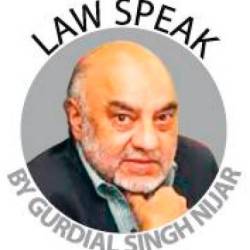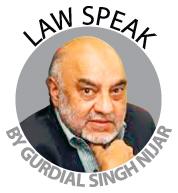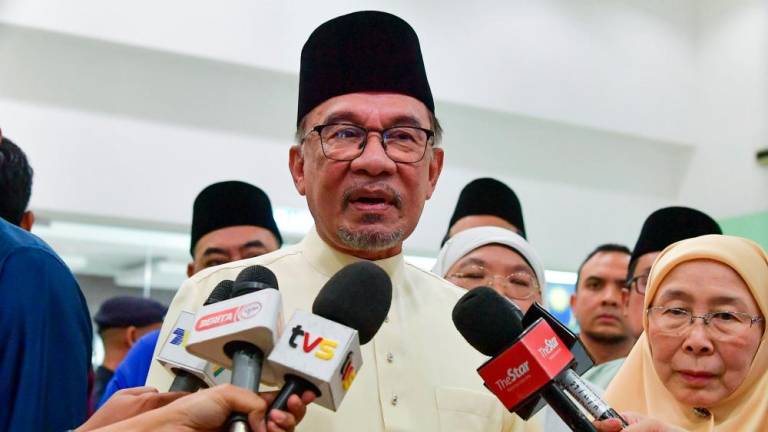DATUK SERI Najib Abdul Razak’s defence team put up a valiant bravado front after High Court Judge Mohd Nazlan Mohd Ghazali convicted its client on seven hefty charges – for abuse of power, criminal breach of trust and money laundering. His jail term totals a staggering 72 years, though he only has to serve 12 years as the sentences will run concurrently. As well as pay a fine of RM210 million.
Nazlan rejected all the defences raised by Najib in, what lawyers have described as, a carefully crafted meticulous judgment.
Najib has two appeal tiers: to the Court of Appeal. Thereafter to the Federal Court. Essentially he must convince the appellate courts that Nazlan’s judgment was plainly wrong. That it was against the weight of evidence and that the trial judge failed to properly evaluate the evidence.
No mean task given that the hearing involved an assessment by the court of the credibility of witnesses – around 76 in total; and an armoury of documents. So let’s examine the judgment.
Abuse of power
First, the charge on the abuse of power. The sum of RM42 million that found its way into Najib’s personal bank accounts came from a RM2 billion loan given to SRC (a subsidiary of 1MDB) by a public retirement fund – KWAP. It was guaranteed by the government.
The judge found that this loan was finally approved by top officers of KWAP – both of whom were appointed by Najib as the minister of finance. He was their ultimate boss.
This superior position gave Najib a considerable degree of influence (as KWAP CEO acknowledged) over the decisions made by these officers “who were, to all intents and purposes, subordinates of the accused”.
Najib’s “overbearing influence” also resulted in KWAP rushing to advance to SRC a further RM2 billion in one lump sum, against its earlier Investment Panel decision. And Najib was at the Cabinet meetings that approved the government guarantee for the loans.
This abuse of power, said the judge, gave Najib access to “much greater funds of the company (SRC), at any time as and when he deemed necessary, including to the RM42 million that flowed into his accounts in late 2014 and early 2015”. This was also the “gratification” under the corruption charge as well.
Najib’s protestations of innocence were belied by his total lack of interest in recovering the bulk of the RM4 billion in public funds that were later frozen in Swiss banks, for alleged money laundering. Obviously he did not want the problem resolved, because of his own complicity in the unlawful transfer of the funds in the first place, said Nazlan.
CBT charges
The judge had no difficulty in finding Najib guilty for criminal breach of trust (CBT). His defence that he did not know that the RM42 million was transferred to his personal account did not explain why he made no attempt to return the money when he found out that it was from SRC. Nor did he give any reason why those he tasked with managing his accounts kept it a secret from him.
More likely, said the judge, the transferors of the monies used various subterfuges to deliberately insulate him from the risk of public disclosure.
Najib’s account was topped up routinely to ensure there were sufficient funds for his use. He admitted he was in contact with those managing his accounts; and with Jho Low. The “overwhelming and inescapable inference”, concluded Nazlan, was that Najib was informed of the monies in his account so that he could then issue cheques for his personal use.
There was simply no basis for the defence argument that all this was done to prevent Najib from knowing the true details of the transaction in his accounts.
Even after being told that the monies came from SRC (and not from a donation) he never expressed any intention to return the RM42 million to SRC.
Arab gift
The judge also had no difficulty in rejecting Najib’s defence that the money was part of a gift from Saudi King Abdullah. First, Najib never confirmed that with the King; he said he was told that by Jho Low. Secondly, paying money into Najib’s personal account was “unusual in international relations”. Thirdly, neither the Malaysian nor the Saudi government confirmed that Najib as prime minister had in fact been receiving in his personal account a personal donation from the Saudi King during the relevant period.
Further, the letter Najib produced promised £50 million; but only a smaller sum (approximating the SRC amount) was transferred to his personal account; and Najib had no explanation for that.
Finally, it was “preposterous and ridiculous” that King Abdullah had information on, and was monitoring, the balance in Najib’s accounts – so as to ensure there were always sufficient funds for him to write cheques out of his own accounts.
“The entire narrative of the defence of the ‘Arab donation’ is a poorly orchestrated self-serving evidence,” said the judge.
Money laundering
On this charge, the judge said that the circumstances were such that Najib knew the sum was from SRC, and not from King Abdullah. This defence was “nothing but an implausible concoction”. The facts and evidence of CBT showed that Najib was not vigilant to ensure that the RM42 million was not the proceeds from unlawful activity. He knew the sources of those monies.
Thus he was found guilty on the money laundering charge as well.
Conclusion
The trial was lengthy and the judge decided on the strength of a large number of witnesses and cold hard documentary evidence. Did he err? It is well to remember that an appellate court “should not interfere with the factual findings of a trial judge unless it was satisfied that the decision of a trial judge was ‘plainly wrong’ in the sense that it could not reasonably be explained or justified and so was one which no reasonable judge could have reached; and that if the appellate court was not satisfied that the decision came within that category it was irrelevant that, with whatever degree of certainty, it considered that it would have reached a different conclusion from the trial judge” – Federal Court in Tengku Dato Ibrahim Petra v Petra Perdana (2018).
Gurdial, a former law professor, now practises law















